Overview
This article presents essential strategies for enhancing wine ecommerce success, underscoring the critical need to establish robust direct-to-consumer sales channels. User-friendly ecommerce platforms, effective demand generation techniques, and personalized marketing approaches are pivotal for improving customer engagement and loyalty. Successful case studies and industry insights reinforce these points, demonstrating the tangible benefits of adopting such strategies. By focusing on these key areas, stakeholders in the wine industry can significantly elevate their ecommerce performance.
Introduction
The wine industry is undergoing a seismic shift as ecommerce fundamentally reshapes consumer purchasing habits. Wineries that proactively adapt to this digital landscape stand to unlock unparalleled growth opportunities. However, the path to success is fraught with challenges that must be navigated with strategic foresight. This article delves into ten essential strategies designed to elevate wine ecommerce, ranging from optimizing direct-to-consumer sales channels to leveraging data analytics and crafting compelling brand narratives.
How can wineries not only survive but thrive in this competitive market, transforming casual buyers into loyal club members?
Enocap: Build Robust Direct-to-Consumer Sales Channels
To establish robust direct-to-consumer (DTC) sales channels, wineries must prioritize the development of user-friendly wine ecommerce platforms that effectively showcase their offerings. Key elements include:
- Optimizing website design for intuitive navigation
- Utilizing high-quality product images
- Providing comprehensive product descriptions
- A seamless checkout process, coupled with diverse payment options
These factors can significantly elevate the customer experience, ultimately driving higher sales and enhancing customer satisfaction.
Successful instances in the industry illustrate the effectiveness of these approaches. For instance, Wine Insiders reported a 73% increase in conversion rates and a 15% rise in average order value after optimizing their wine ecommerce platform. This underscores the critical role that user-friendly design plays in boosting wine sales.
To further enhance DTC strategies, producers should focus on transforming casual buyers into loyal club members through proven approaches such as:
- Personalized marketing
- Exclusive offers
- Engaging storytelling
Building sustainable direct-to-consumer channels is essential for consistent growth, and effective brand storytelling can engage customers on a deeper level. Best practices for wine ecommerce platforms in 2025 should also include:
- Mobile optimization
- Robust subscription management features
- Strategic capital planning to support growth initiatives
As Mandie Sellars notes, 'Shopify offers a modern, scalable platform with a robust app ecosystem, extensive customization options, and proven success among brands in the wine ecommerce sector already selling DTC.' Furthermore, integrating compliance solutions for tax calculations and shipping restrictions is essential for ensuring that businesses meet legal requirements while enhancing customer trust. By adopting these strategies, wine producers can create engaging online experiences that resonate with consumers and foster long-term loyalty.
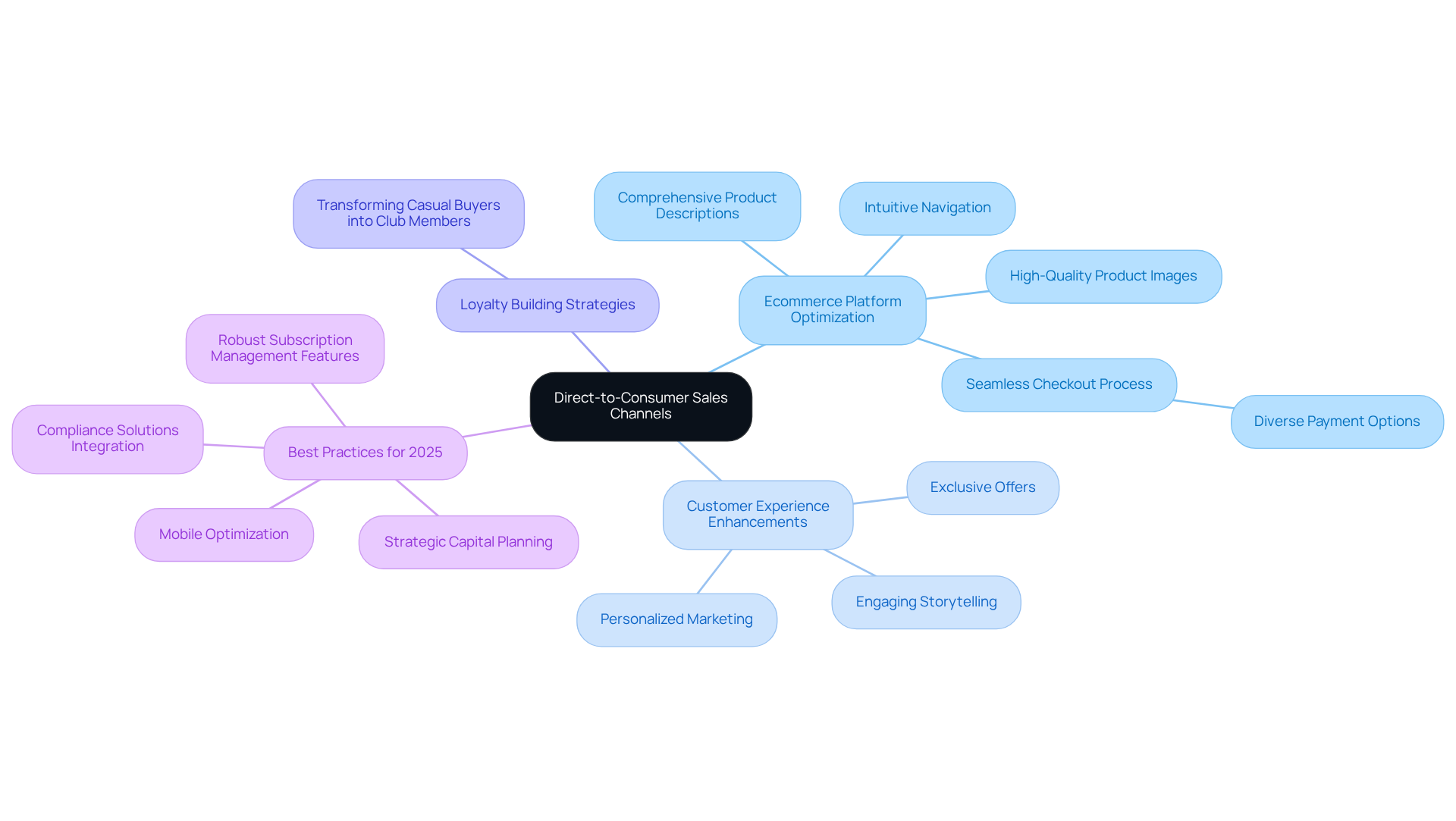
Optimize Wine Club Memberships for Increased Loyalty
Optimizing wine club memberships is fundamentally about crafting personalized experiences that resonate deeply with members. Wineries can significantly by providing exclusive access to limited releases and curating selections tailored to members' past purchases. Engaging content, including virtual tastings and behind-the-scenes narratives, fosters a profound connection with the brand.
Furthermore, regular communication through customized newsletters and special promotions keeps members informed and excited, leading to a notable increase in retention rates. Notably, establishments that personalize their communications can witness a substantial boost in member loyalty; currently, 36% of such businesses overlook this critical opportunity.
Implementing small yet thoughtful changes, such as personalized thank-you notes or exclusive offers, can dramatically transform member experiences and encourage long-term commitment. For instance, establishments that celebrate member milestones with personal touches frequently report heightened engagement and satisfaction, underscoring the value of a personalized approach in today’s competitive market.
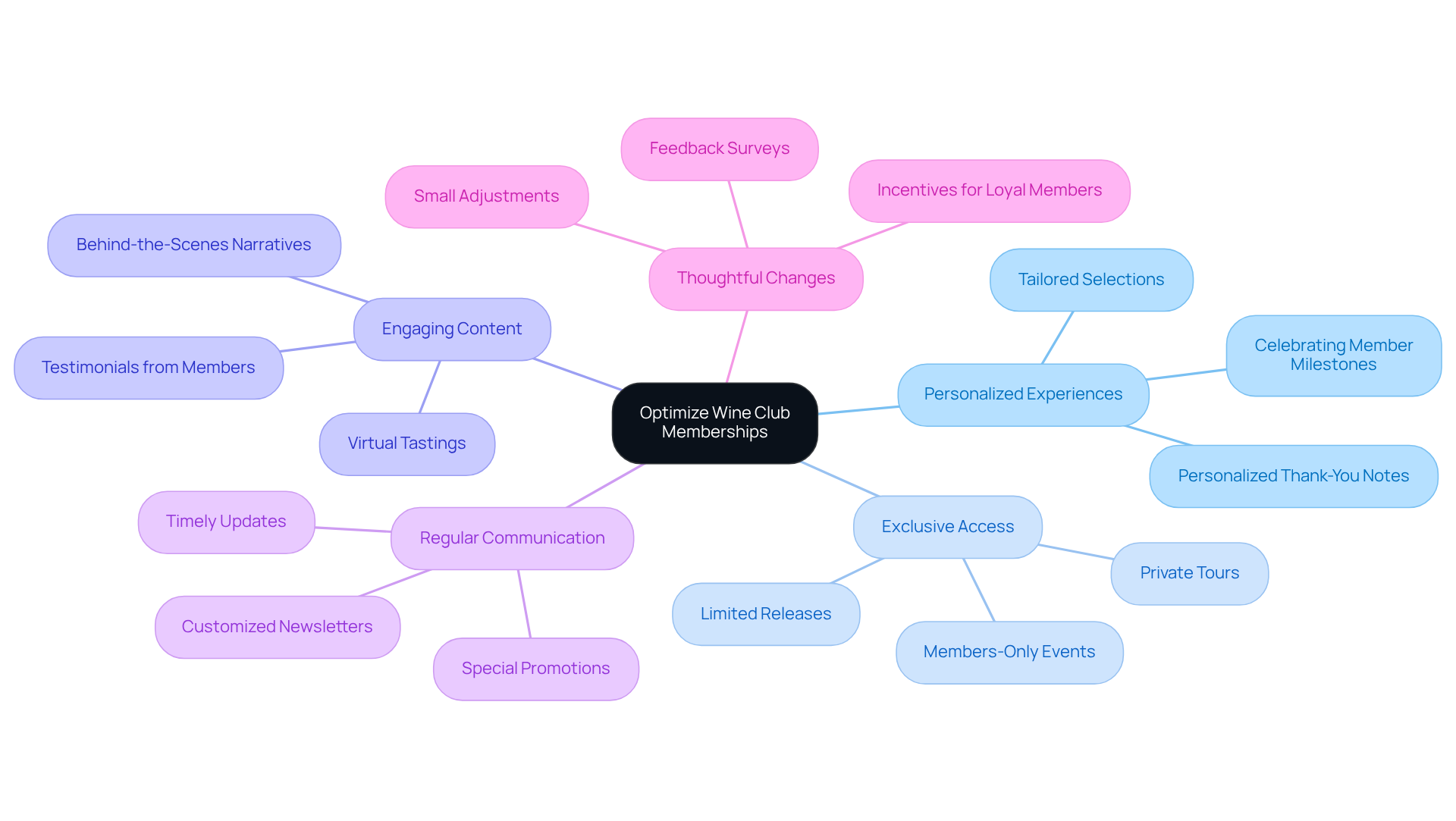
Implement Effective Demand Generation Techniques
To effectively generate demand, wineries must harness the power of content marketing, email campaigns, and targeted advertising while focusing on building sustainable in wine ecommerce. Engaging blog posts, videos, and social media content that showcase unique offerings and compelling brand narratives are essential. This storytelling method not only engages prospective clients but also nurtures a deeper bond with the brand, converting casual purchasers into devoted club members through effective strategies such as exclusive membership advantages and tailored experiences. Furthermore, utilizing email marketing to keep clients informed about new releases, exclusive promotions, and upcoming events significantly drives interest and encourages purchases. Regular newsletters serve as essential touchpoints, enhancing client loyalty and engagement.
Targeted advertising on social media platforms allows wineries to reach potential customers based on their specific interests and behaviors, maximizing the effectiveness of marketing efforts. As industry specialists assert, "Content is paramount in alcohol marketing," and incorporating analytics into these approaches delivers valuable insights for ongoing enhancement. Quinn Schwartz highlights the significance of analytics by stating, "Incorporate analytics: Track and analyze data to enhance your marketing approaches and make informed choices about optimizing your product offerings." Moreover, aligning campaigns with genuine influencers who comprehend the beverage industry can help create authentic connections with your audience. For instance, vineyards that have effectively adopted these techniques have observed significant rises in customer interaction and sales, showcasing the tangible effect of a well-executed demand generation approach. Notably, 27% of new wine club registrations come from online channels, underscoring the success of wine ecommerce and these digital marketing strategies. Additionally, strategic capital planning can further enhance these efforts, ensuring that businesses are well-positioned for sustainable growth.
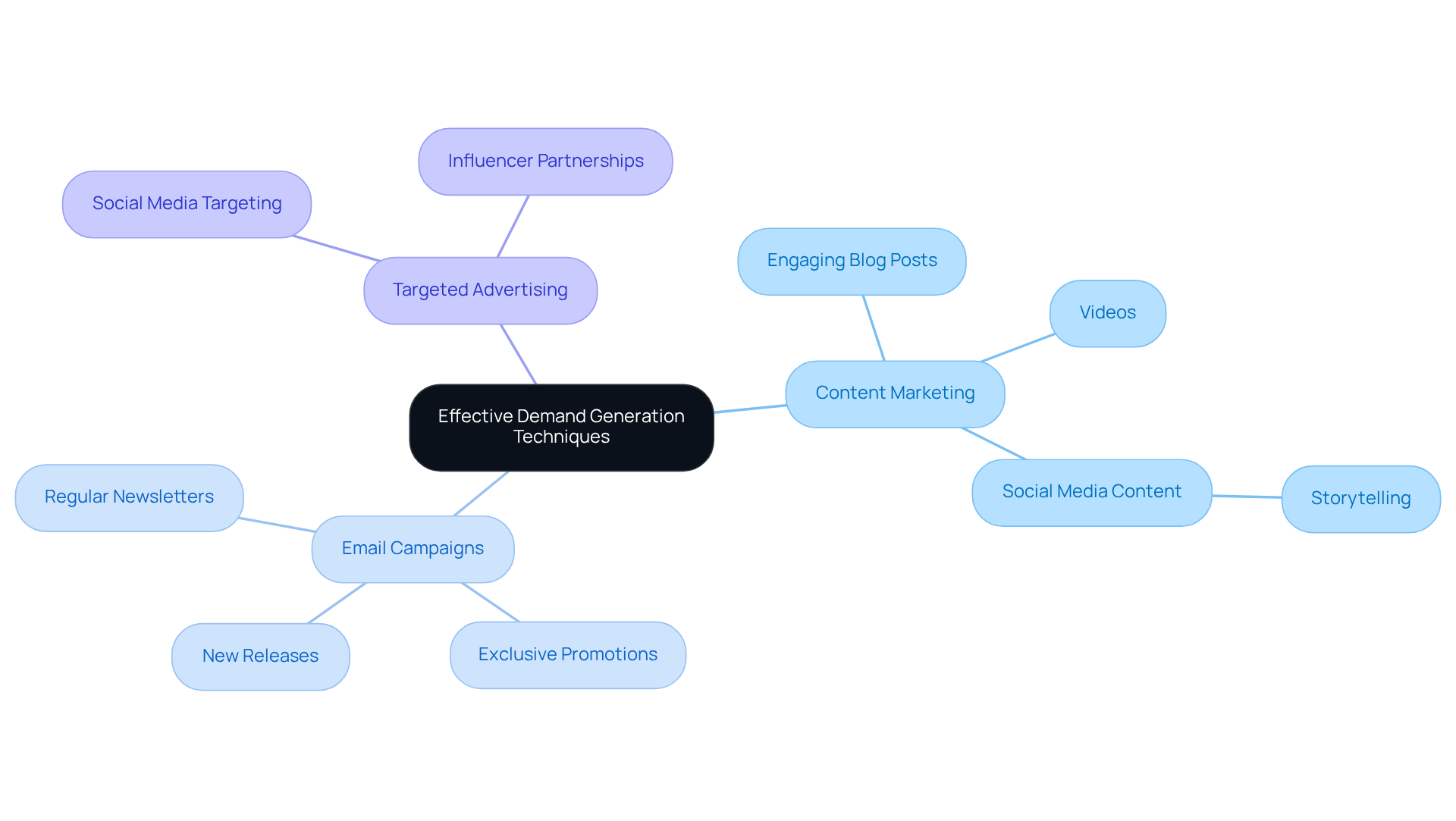
Leverage Data Analytics to Understand Consumer Behavior
Wineries can significantly enhance their marketing effectiveness by leveraging to gain deep insights into consumer behavior, preferences, and purchasing patterns. By examining information from e-commerce platforms, social media engagements, and client feedback, vineyards can recognize emerging trends and adjust their marketing strategies accordingly. This approach may include:
- Personalizing marketing messages to resonate with specific customer segments
- Optimizing product offerings based on consumer demand
- Enhancing customer service to foster loyalty
For instance, vineyards that employ AI-driven analytics have reported an 18% rise in subscription wine club memberships. This statistic underscores the potential of data to enhance engagement and convert casual purchasers into dedicated club members. Furthermore, understanding consumer behavior allows wine producers to anticipate shifts in preferences, enabling proactive adjustments to marketing campaigns and inventory management. As personalization becomes a standard expectation, establishments that effectively harness consumer insights will not only enhance their marketing efficiency but also cultivate lasting relationships with their customers.
Additionally, incorporating strategic capital planning into these efforts can assist vineyards in securing the necessary resources for growth and sustainability. By establishing sustainable direct-to-consumer channels and applying effective strategies, vineyards can unlock predictable revenue growth. A modern, data-capable website is also crucial for capturing valuable customer insights and optimizing marketing efforts, ultimately supporting strategic capital planning for future growth opportunities.
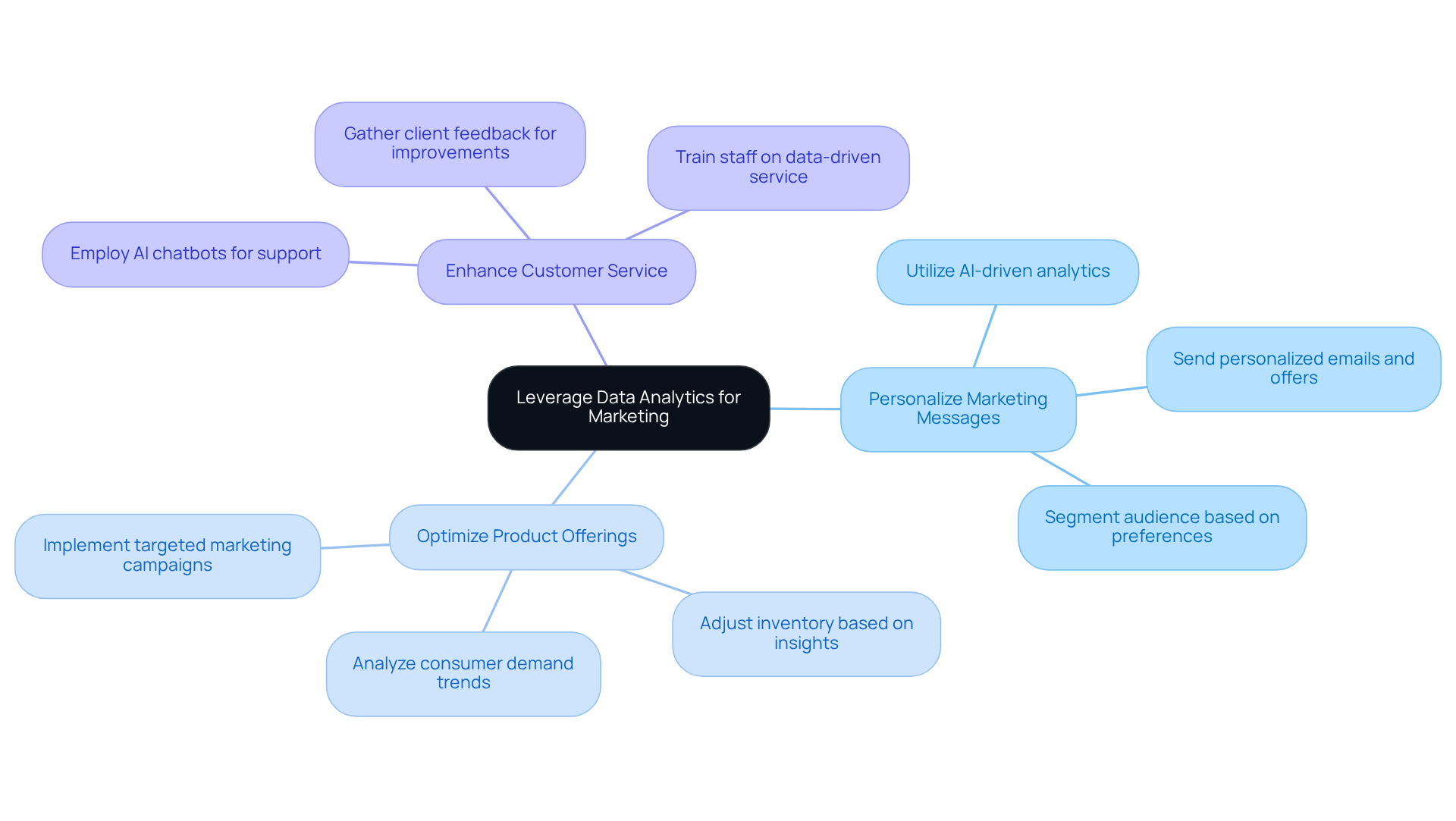
Craft Compelling Brand Narratives to Engage Customers
Creating engaging brand stories is essential for vineyards aiming to forge deeper connections with consumers. By sharing their history, values, and unique selling points, wineries can craft compelling narratives about their vineyards, winemaking processes, and the passionate individuals behind the brand. This storytelling approach should be seamlessly integrated into marketing materials, social media posts, and website content, fostering emotional connections that resonate with consumers. Engaging narratives not only draw customers in but also inspire them to share their experiences, thereby amplifying the brand's reach and enhancing loyalty.
For instance, studies reveal that buyers are 5% more likely to choose a bottle featuring the winemaker's narrative and are willing to pay 6% more for it. Wineries can strengthen their [direct-to-consumer channels](https://enocap.com) by implementing strategies such as:
- Personalized marketing
- Loyalty programs
- Community engagement initiatives
- Enhancing their wine ecommerce presence
Moreover, emphasizing their commitment to sustainability and community involvement can bolster consumer trust and increase the willingness to pay a premium for their products. As noted by industry specialists, a well-crafted narrative can significantly influence purchasing decisions, making storytelling an indispensable strategy in the competitive beverage market.
Furthermore, integrating strategic capital planning into these efforts ensures that family-owned vineyards can thrive for generations, transforming casual buyers into loyal club members through proven strategies and sustainable direct-to-consumer channels within the wine ecommerce sector.
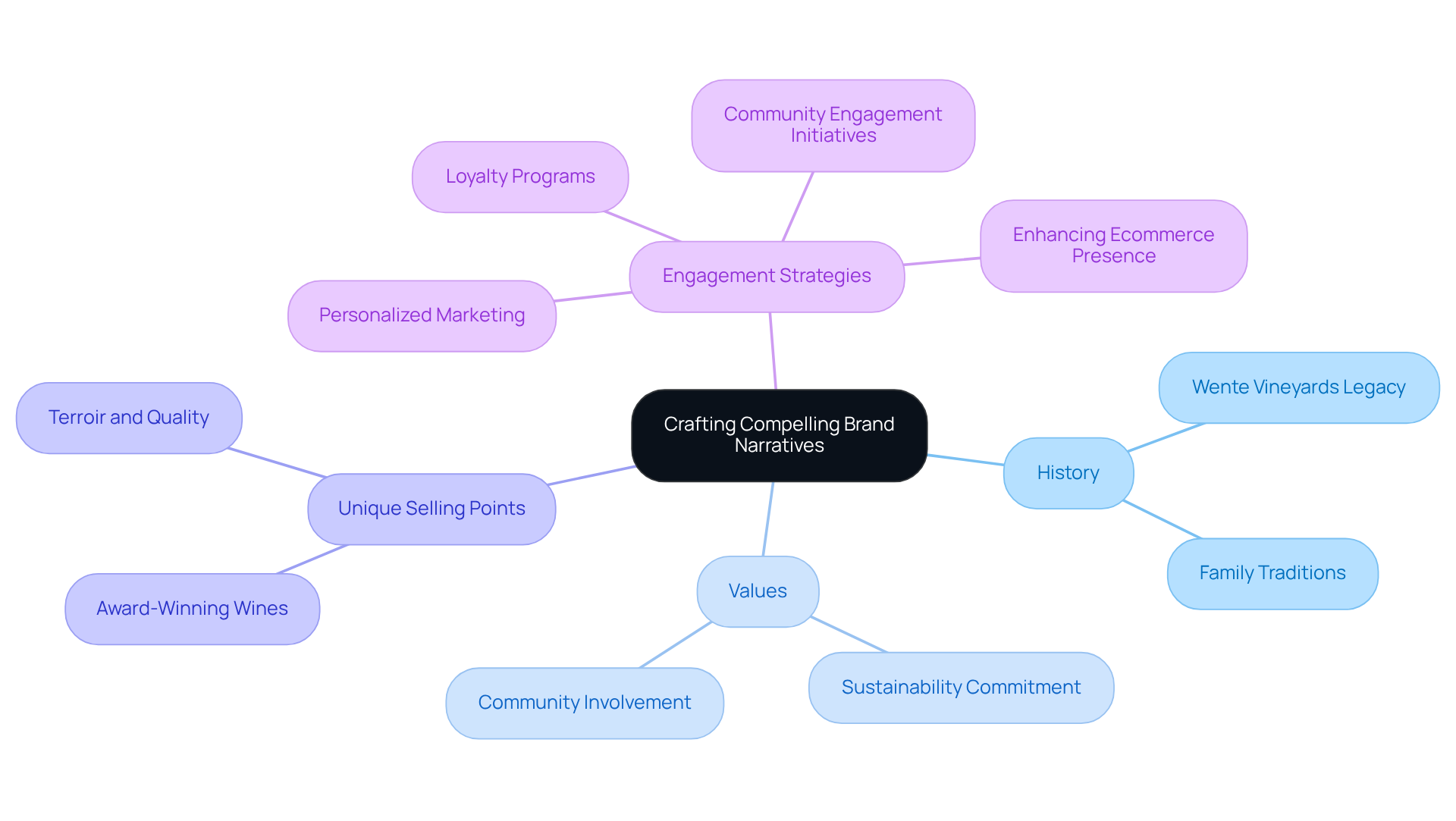
Utilize Social Media for Enhanced Marketing Reach
Wineries must leverage like Instagram, Facebook, and Twitter to connect with their audience effectively. By consistently sharing high-quality images of their beverages, picturesque vineyard landscapes, and engaging events, wineries can attract followers and stimulate interaction.
Running targeted social media campaigns, contests, and collaborations with prominent personalities in the industry significantly broadens their reach and drives traffic to their websites. Engaging with followers through comments and direct messages not only fosters a sense of community but also cultivates brand loyalty.
Notably, 68% of wine consumers are influenced by recommendations from wine influencers, highlighting the potential impact of strategic partnerships in enhancing visibility and credibility.
Successful examples, such as the McBride Sisters and Silver Oak, showcase how captivating content and authentic storytelling resonate with audiences, making social media an essential tool for contemporary vineyards.
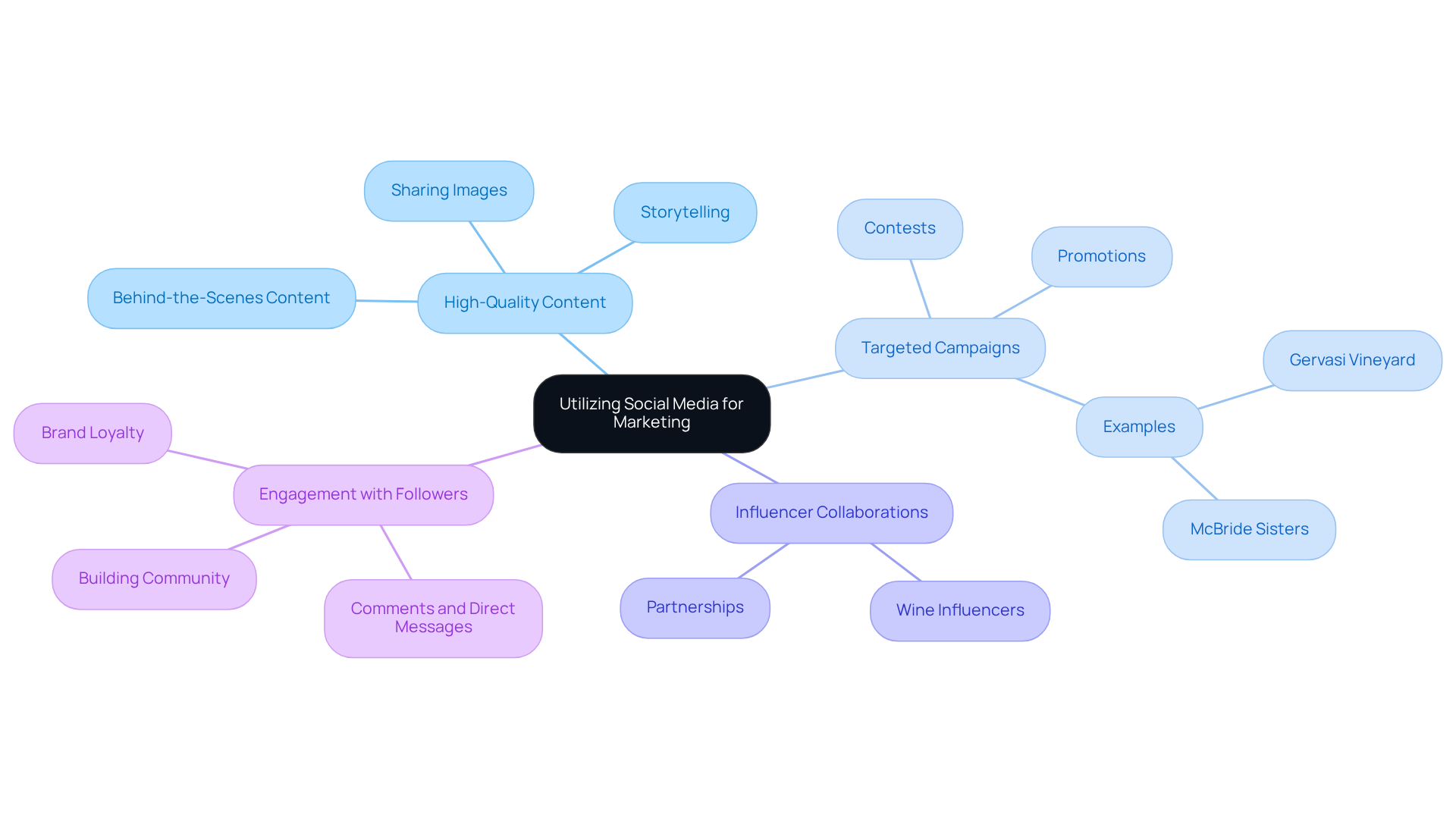
Ensure Mobile Optimization for Seamless Shopping Experience
To create a seamless shopping experience and revolutionize family-owned vineyards, prioritizing across their wine ecommerce platforms is essential. Implementing responsive design, ensuring rapid loading times, and facilitating easy navigation are critical steps. Research reveals that:
- 53% of mobile users abandon a site if it takes longer than three seconds to load, highlighting the imperative for speed.
- Simplifying the checkout process for mobile users and ensuring all content is easily accessible on smaller screens can significantly enhance user satisfaction and foster loyalty among casual buyers.
- 40% of online transactions occur through mobile devices, developing dedicated mobile applications can provide a more tailored shopping experience, enabling businesses to connect effectively with consumers and share their unique brand narratives.
- 78.2% of consumers visit vineyard websites for additional information before making a purchase, underscoring the necessity for vineyards to ensure their digital presence is mobile-friendly.
As the wine industry adapts to these trends, establishing a mobile-friendly digital presence for wine ecommerce will be crucial for capturing consumer interest, facilitating informed purchasing decisions, and ultimately driving sustainable growth for family-owned wineries.
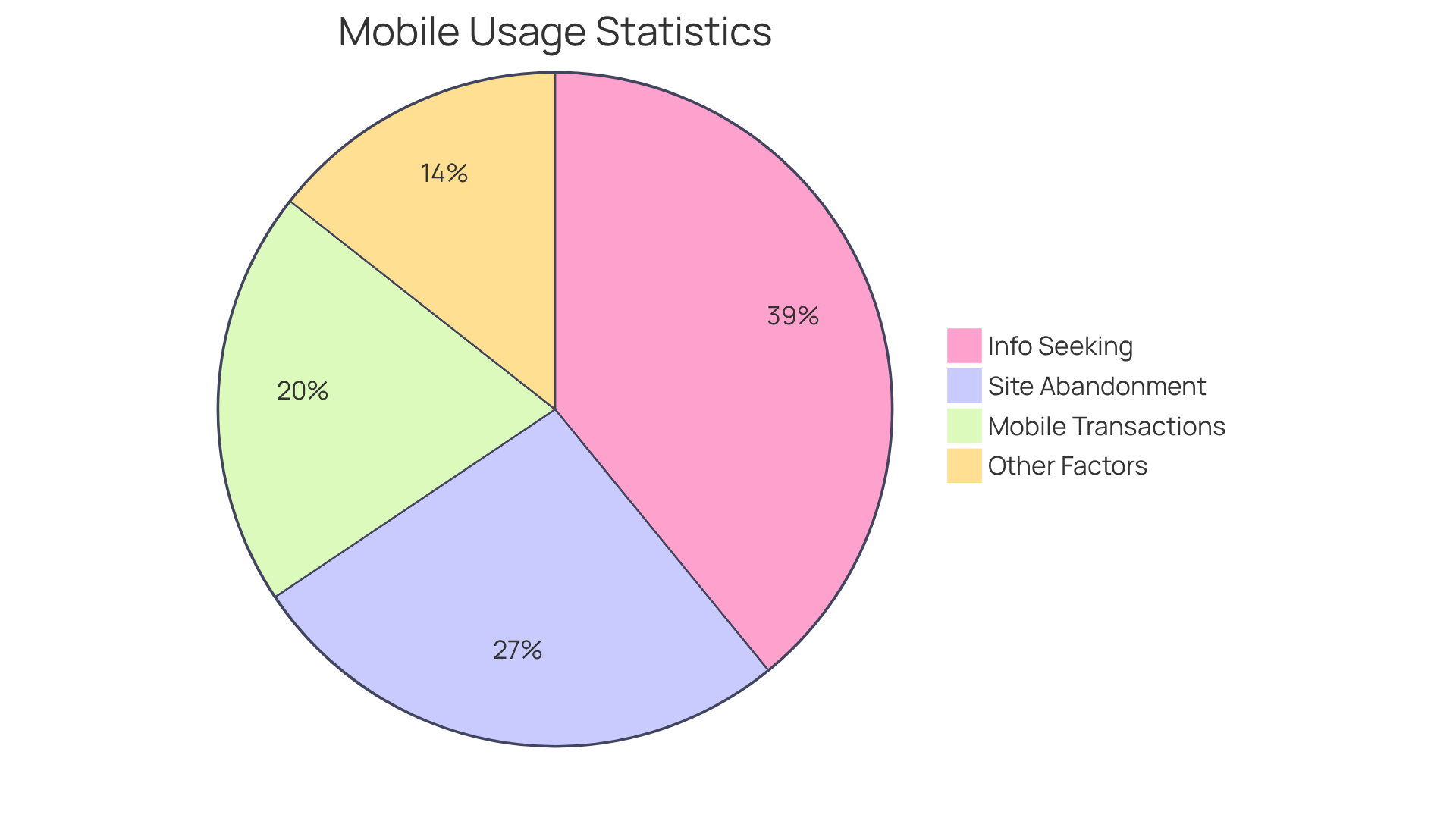
Incorporate Customer Feedback to Enhance Offerings
Wineries must prioritize gathering through surveys, reviews, and direct communication channels. This proactive approach not only enables the examination of client preferences but also identifies areas for improvement. By harnessing this feedback, wineries can enhance their product offerings, elevate service quality, and tailor marketing strategies to forge stronger connections with their audience. Recognizing and responding to client feedback boosts loyalty and encourages repeat business, establishing a cycle of ongoing enhancement and client satisfaction.
As industry experts emphasize, understanding customer perspectives is essential for crafting memorable experiences that drive brand advocacy and long-term success. Moreover, incorporating strategic capital planning and engaging brand storytelling into these initiatives can significantly improve the effectiveness of direct-to-consumer approaches in wine ecommerce. By implementing transformative direct-to-consumer strategies, vineyards can effectively convert casual buyers into loyal club members, ensuring sustainable growth and a thriving business for generations.
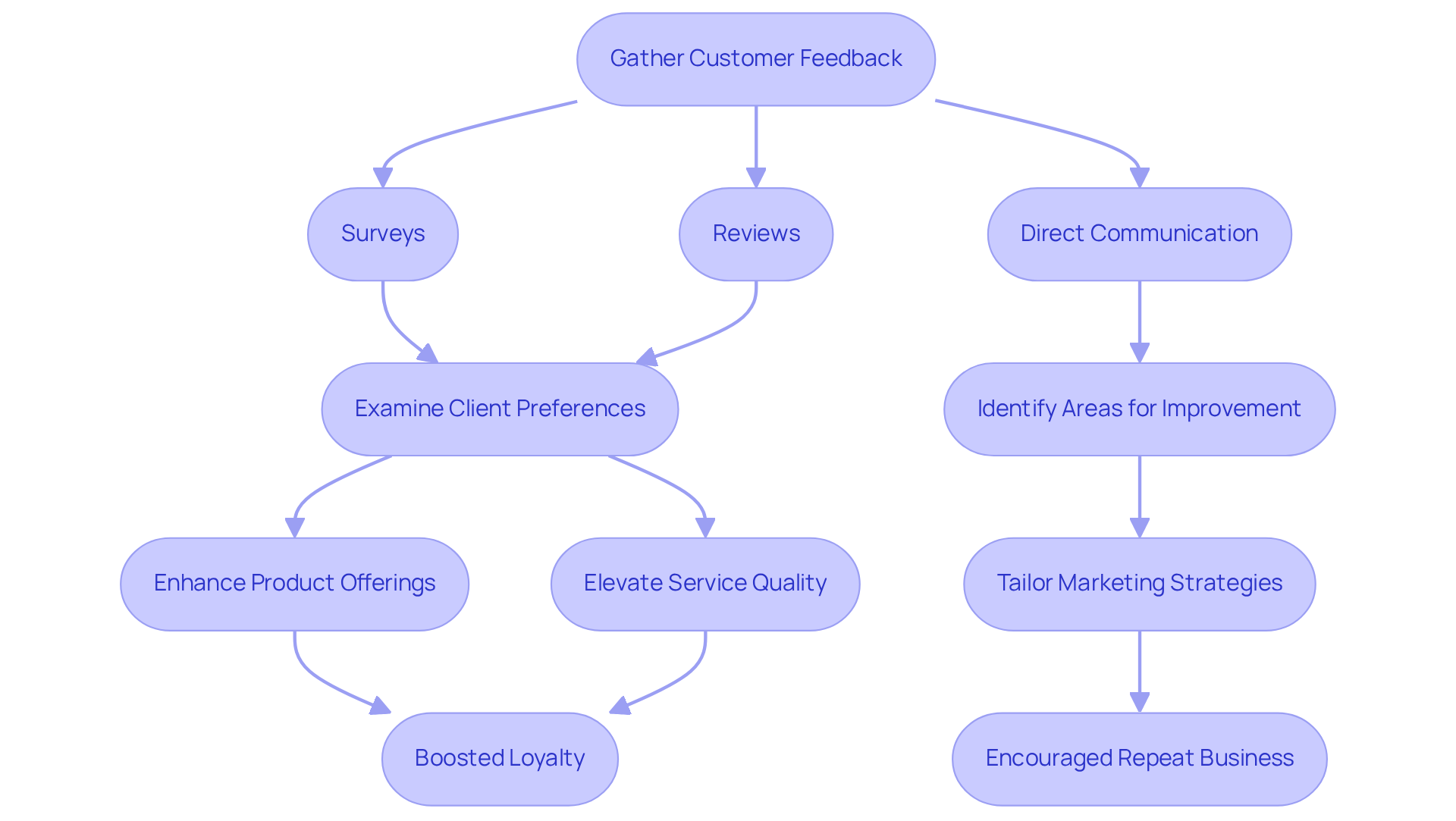
Form Strategic Partnerships to Expand Market Reach
Forming strategic alliances with nearby restaurants, hotels, and event coordinators is essential for significantly expanding a vineyard's market reach. These collaborations can manifest in various forms, such as:
- Hosting joint events
- Offering exclusive beverage pairings
- Creating co-branded experiences that resonate with consumers
For instance, vineyards can partner with local chefs to design distinctive tasting menus that showcase their wines, effectively attracting both food enthusiasts and wine aficionados.
Such collaborations not only enhance visibility but also generate valuable cross-promotion opportunities, drawing in new patrons who may not have previously discovered the establishment. Marketing specialists emphasize that these partnerships can lead to enhanced brand loyalty and consumer engagement, as they provide unforgettable experiences that connect buyers with both the vineyard and the local community. To transform casual purchasers into devoted club members, vineyards should adopt strategies like:
- Exclusive member events
- Personalized wine suggestions based on customer preferences
Current trends in co-branding experiences reveal that vineyards are increasingly collaborating with local enterprises to create immersive events that celebrate regional culture and flavors. This approach not only elevates the establishment's profile but also fosters a sense of community, ensuring a win-win scenario for all parties involved. Furthermore, vineyards must consider the role of strategic capital planning in these partnerships, ensuring that they not only enhance brand visibility but also align with long-term growth objectives. By leveraging these strategic partnerships, wineries can effectively broaden their market reach and cultivate enduring relationships with consumers, ultimately driving consistent growth.
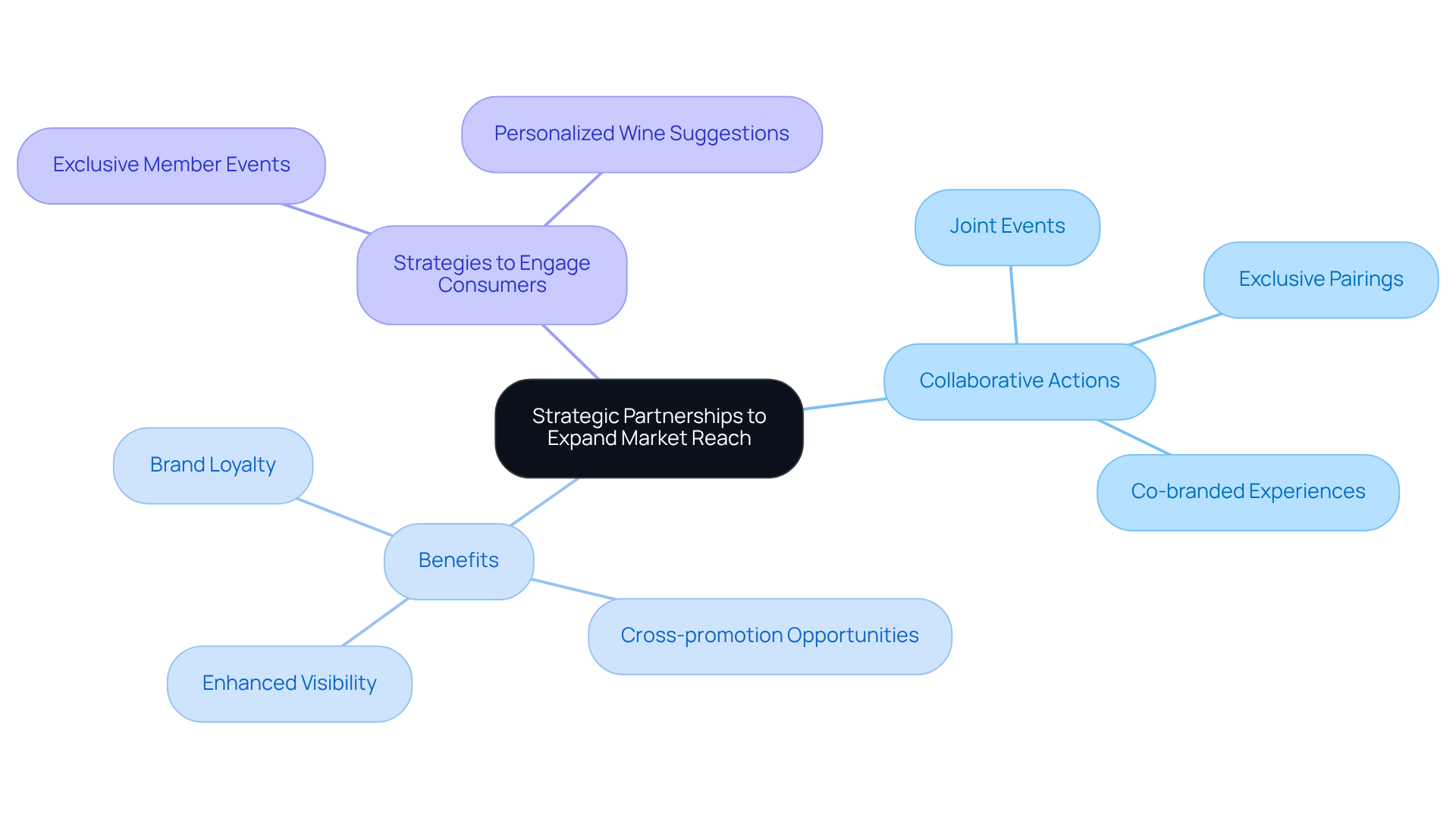
Implement Effective Inventory Management Strategies
Implementing effective inventory management strategies requires the use of software tools to meticulously track stock levels, sales trends, and reorder points. Wineries must regularly analyze sales data to accurately forecast demand and adjust inventory accordingly. This proactive approach not only helps avoid stockouts during peak seasons but also minimizes surplus inventory, ultimately enhancing cash flow and ensuring that customers consistently find their preferred beverages available for purchase. Notably, InnoVint's SUPPLY platform is projected to save vineyards thousands of dollars annually in taxes, underscoring the financial benefits of adopting such software.
Wineries should prioritize such as average order value and wine club conversion rates to make informed decisions about inventory levels. This adaptability is vital in a competitive market where consumer preferences can shift rapidly. Current trends indicate that vineyards are increasingly embracing data-driven approaches for sales forecasting, enabling them to dynamically modify their inventory plans.
By 2025, establishments investing in flexible, connected systems will not only save time but also enhance their ability to adapt to market changes. As Tim Drake, a winemaker at Michael Ros Winery, emphasized, the right software can eliminate the cumbersome need for emailing spreadsheets or inquiring about inventory data, leading to improved decision-making and increased profitability. Moreover, transitioning from clipboards to connected systems has revolutionized workflows, saving hours previously spent on data re-entry. By adopting these inventory management strategies, wineries can strategically position themselves for sustained success in the evolving wine market.
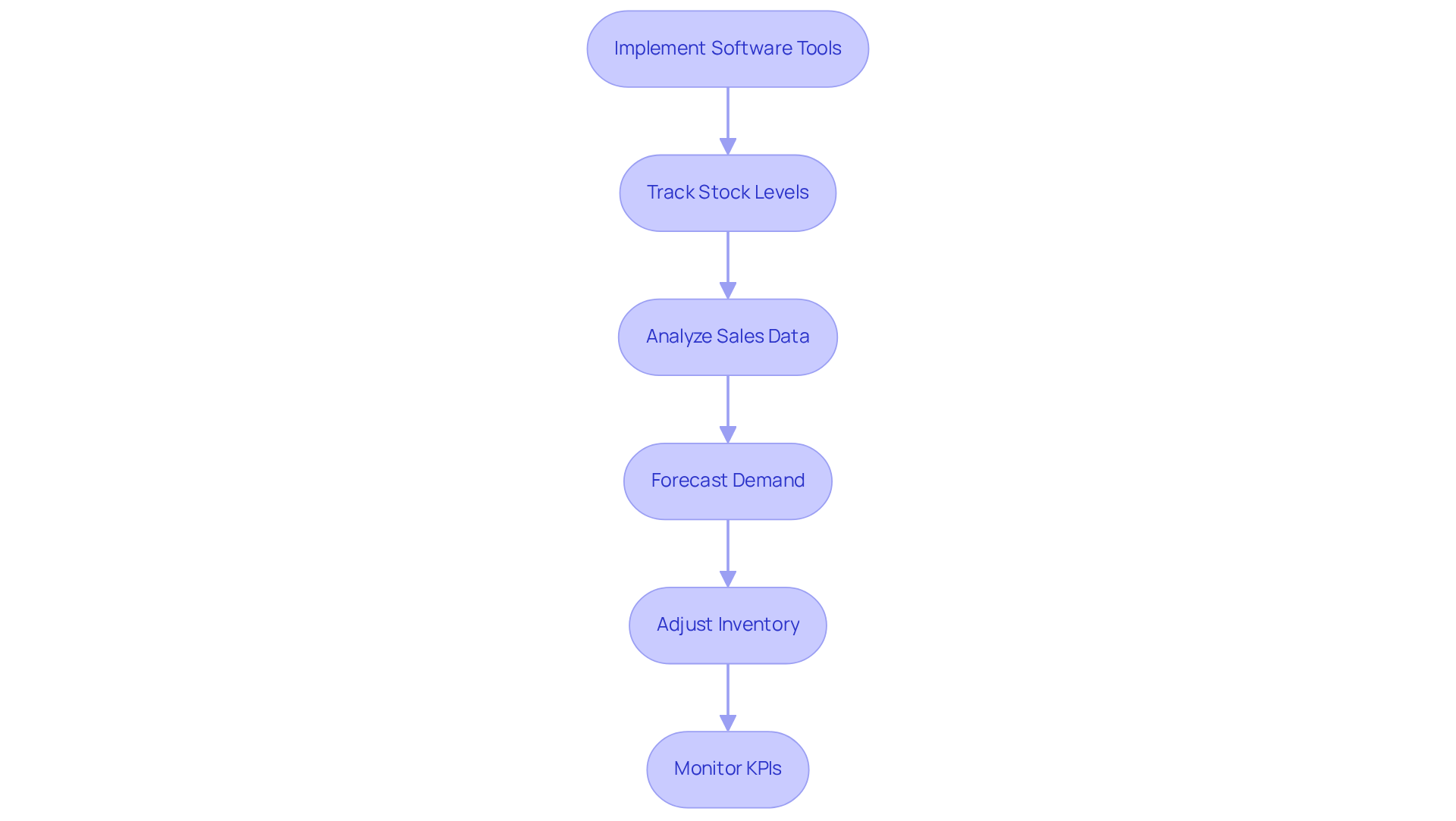
Conclusion
Establishing a successful wine ecommerce business is contingent upon the implementation of essential strategies that significantly enhance direct-to-consumer (DTC) sales channels. By prioritizing user-friendly platforms, personalized marketing, and effective storytelling, wineries can craft compelling online experiences that resonate deeply with consumers. This underscores the core message: a thoughtful approach to ecommerce not only drives sales but also cultivates long-term customer loyalty.
The article delineates several key strategies for amplifying wine ecommerce success, including:
- Optimization of website design
- Leveraging of data analytics
- Engagement of customers through social media
Furthermore, enhancing wine club memberships and forming strategic partnerships can markedly improve customer retention and broaden market reach. Each of these tactics is pivotal in creating a seamless shopping experience and forging meaningful connections with consumers.
Ultimately, the wine industry finds itself at a critical juncture where the adoption of innovative ecommerce strategies can facilitate sustainable growth. Wineries are urged to embrace these practices not only to meet current consumer expectations but also to excel in a competitive landscape. By prioritizing customer engagement and harnessing data-driven insights, wine producers can transform casual buyers into loyal enthusiasts, thereby ensuring a prosperous future in the evolving wine market.
Frequently Asked Questions
What are the key elements for establishing robust direct-to-consumer (DTC) sales channels for wineries?
Key elements include optimizing website design for intuitive navigation, utilizing high-quality product images, providing comprehensive product descriptions, and ensuring a seamless checkout process with diverse payment options.
How can wineries enhance customer experience and drive higher sales?
By focusing on user-friendly design elements in their ecommerce platforms, wineries can significantly elevate the customer experience, leading to increased sales and enhanced customer satisfaction.
What example illustrates the effectiveness of optimizing wine ecommerce platforms?
Wine Insiders reported a 73% increase in conversion rates and a 15% rise in average order value after optimizing their wine ecommerce platform, highlighting the critical role of user-friendly design.
What strategies can producers use to transform casual buyers into loyal club members?
Producers can use personalized marketing, exclusive offers, and engaging storytelling to convert casual buyers into loyal club members.
What best practices should wine ecommerce platforms adopt by 2025?
Best practices should include mobile optimization, robust subscription management features, and strategic capital planning to support growth initiatives.
Why is integrating compliance solutions important for wineries?
Integrating compliance solutions for tax calculations and shipping restrictions is essential for meeting legal requirements and enhancing customer trust.
How can wineries optimize wine club memberships to increase loyalty?
Wineries can enhance loyalty by providing exclusive access to limited releases, curating selections based on past purchases, and engaging members with content like virtual tastings and behind-the-scenes narratives.
What role does personalized communication play in member retention?
Regular communication through customized newsletters and special promotions can keep members informed and excited, leading to increased retention rates.
What small changes can improve member experiences in wine clubs?
Small changes such as personalized thank-you notes or exclusive offers can significantly enhance member experiences and encourage long-term commitment.
What demand generation techniques should wineries implement?
Wineries should utilize content marketing, email campaigns, and targeted advertising, focusing on building sustainable direct-to-consumer channels in wine ecommerce.
How can storytelling impact customer engagement?
Engaging blog posts, videos, and social media content that showcase unique offerings and compelling brand narratives can nurture a deeper bond with the brand and convert casual purchasers into devoted club members.
What is the significance of analytics in wine marketing?
Incorporating analytics allows wineries to track and analyze data, enhancing marketing approaches and optimizing product offerings.
How can strategic capital planning benefit wineries?
Strategic capital planning can enhance marketing efforts and ensure that businesses are well-positioned for sustainable growth.




